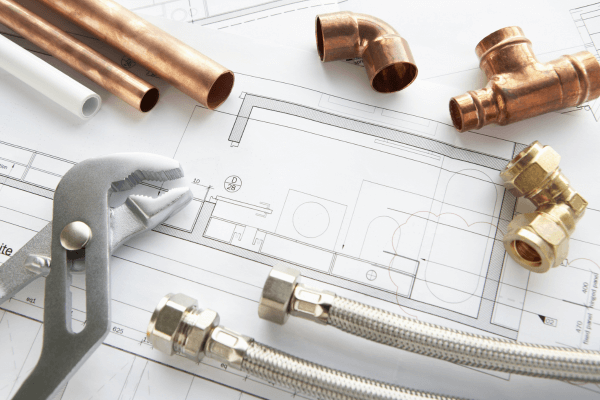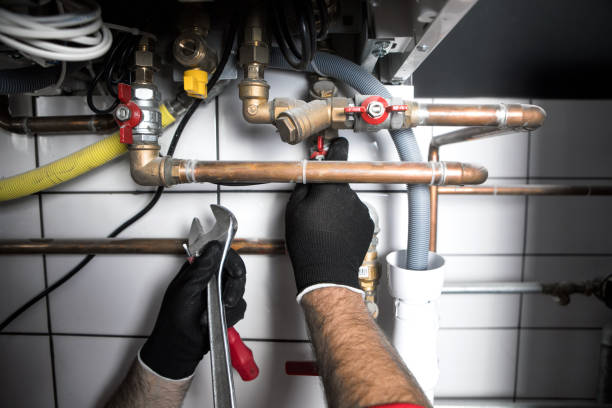An In-Depth Look at Your Property's Plumbing System Anatomy
An In-Depth Look at Your Property's Plumbing System Anatomy
Blog Article
Just about everyone is bound to have his or her own opinion about The Inner Workings of Your Home's Plumbing.

Comprehending how your home's pipes system works is important for every single house owner. From delivering clean water for alcohol consumption, cooking, and showering to securely removing wastewater, a well-kept pipes system is essential for your family members's health and comfort. In this extensive overview, we'll check out the detailed network that makes up your home's plumbing and offer pointers on upkeep, upgrades, and dealing with common issues.
Introduction
Your home's pipes system is more than simply a network of pipes; it's a complicated system that guarantees you have accessibility to tidy water and effective wastewater removal. Recognizing its parts and exactly how they work together can help you avoid costly repairs and guarantee everything runs smoothly.
Fundamental Components of a Plumbing System
Pipes and Tubing
At the heart of your plumbing system are the pipes and tubes that carry water throughout your home. These can be constructed from numerous products such as copper, PVC, or PEX, each with its advantages in regards to longevity and cost-effectiveness.
Fixtures: Sinks, Toilets, Showers, etc.
Components like sinks, bathrooms, showers, and tubs are where water is made use of in your home. Understanding just how these components attach to the plumbing system aids in identifying problems and planning upgrades.
Shutoffs and Shut-off Factors
Valves regulate the circulation of water in your pipes system. Shut-off valves are essential during emergencies or when you require to make fixings, permitting you to separate parts of the system without interfering with water circulation to the whole home.
Water System System
Key Water Line
The primary water line links your home to the community water system or an exclusive well. It's where water enters your home and is distributed to numerous fixtures.
Water Meter and Pressure Regulatory Authority
The water meter measures your water usage, while a pressure regulator makes sure that water streams at a safe pressure throughout your home's pipes system, stopping damage to pipelines and components.
Cold Water vs. Hot Water Lines
Understanding the difference between cold water lines, which supply water straight from the major, and hot water lines, which carry warmed water from the water heater, helps in repairing and planning for upgrades.
Water drainage System
Drain Pipes and Traps
Drain pipelines carry wastewater far from sinks, showers, and bathrooms to the sewer or septic system. Catches avoid sewage system gases from entering your home and likewise trap particles that could create obstructions.
Ventilation Pipelines
Air flow pipelines enable air right into the drain system, preventing suction that could slow down drainage and trigger traps to vacant. Appropriate ventilation is important for keeping the integrity of your pipes system.
Significance of Correct Drainage
Making certain proper drainage stops back-ups and water damage. Consistently cleaning up drains pipes and maintaining catches can prevent expensive repairs and prolong the life of your pipes system.
Water Heating System
Kinds Of Hot Water Heater
Water heaters can be tankless or typical tank-style. Tankless heaters warm water as needed, while tanks keep warmed water for immediate usage.
Updating Your Pipes System
Reasons for Updating
Updating to water-efficient fixtures or replacing old pipes can enhance water top quality, reduce water costs, and increase the worth of your home.
Modern Pipes Technologies and Their Benefits
Explore modern technologies like smart leak detectors, water-saving commodes, and energy-efficient hot water heater that can save money and lower ecological impact.
Cost Factors To Consider and ROI
Calculate the in advance costs versus lasting savings when considering pipes upgrades. Lots of upgrades spend for themselves with minimized energy costs and fewer repair services.
Just How Water Heaters Attach to the Plumbing System
Understanding how water heaters attach to both the cold water supply and hot water distribution lines helps in diagnosing problems like inadequate warm water or leakages.
Maintenance Tips for Water Heaters
Regularly flushing your water heater to remove sediment, inspecting the temperature level settings, and evaluating for leakages can expand its lifespan and boost power performance.
Typical Plumbing Concerns
Leakages and Their Reasons
Leakages can happen because of aging pipes, loose fittings, or high water pressure. Addressing leakages without delay protects against water damages and mold and mildew growth.
Blockages and Blockages
Clogs in drains pipes and commodes are usually triggered by purging non-flushable things or a build-up of oil and hair. Utilizing drain screens and bearing in mind what drops your drains can avoid blockages.
Indications of Pipes Troubles to Expect
Low water stress, slow drains pipes, foul odors, or uncommonly high water bills are signs of possible pipes problems that need to be addressed immediately.
Plumbing Maintenance Tips
Routine Inspections and Checks
Schedule yearly plumbing inspections to catch concerns early. Look for signs of leakages, deterioration, or mineral buildup in taps and showerheads.
Do It Yourself Maintenance Tasks
Simple jobs like cleaning faucet aerators, looking for toilet leakages using color tablets, or shielding exposed pipelines in cool environments can avoid major pipes issues.
When to Call an Expert Plumbing Professional
Know when a plumbing issue calls for expert knowledge. Trying complicated fixings without appropriate knowledge can bring about more damages and higher repair service costs.
Tips for Decreasing Water Use
Basic routines like fixing leaks without delay, taking shorter showers, and running complete lots of washing and recipes can save water and lower your utility expenses.
Eco-Friendly Pipes Options
Consider sustainable plumbing products like bamboo for flooring, which is durable and environment-friendly, or recycled glass for kitchen counters.
Emergency Readiness
Actions to Take Throughout a Pipes Emergency
Know where your shut-off valves are located and just how to switch off the supply of water in case of a ruptured pipe or major leak.
Importance of Having Emergency Get In Touches With Convenient
Keep get in touch with information for local plumbers or emergency solutions readily available for fast feedback during a pipes crisis.
Ecological Effect and Conservation
Water-Saving Fixtures and Devices
Mounting low-flow taps, showerheads, and bathrooms can substantially lower water usage without giving up performance.
Do It Yourself Emergency Fixes (When Suitable).
Short-term fixes like using air duct tape to spot a leaking pipe or placing a bucket under a leaking tap can lessen damage until a professional plumbing technician shows up.
Final thought.
Recognizing the makeup of your home's pipes system equips you to maintain it efficiently, saving time and money on repair work. By complying with normal upkeep regimens and staying notified concerning modern-day plumbing innovations, you can guarantee your pipes system runs efficiently for many years to find.
Understanding Your Home Plumbing System: A Comprehensive Guide
Plumbing System: The Lifeline of Your Home
At its core, the plumbing system is designed to perform two primary functions: bring fresh water into your home and remove wastewater. The system is a network of pipes, fixtures, and other components that transport water and sewage. Residential plumbing systems include potable water supply lines, drain-waste-vent (DWV) systems, and various plumbing fixtures that make water use in daily tasks possible.
Key Components:
Water Supply: This part of your plumbing system brings municipal water into your home, passing through the main water supply line. It s responsible for supplying all water needs, from drinking to bathing.
Drainage System: It carries waste and water away from your home to the sewer or septic system. This system includes all the piping within your home that leads to external sewage or septic systems.
Vent System: An essential yet often overlooked component, the vent system allows sewer gases to escape and lets air into the drainpipes, ensuring water and waste move correctly through the system.
Fixture: More Than Just Taps and Toilets
Plumbing fixtures are the most interactive parts of the plumbing system, including faucets, showers, toilets, and sinks. Each fixture is connected to the plumbing system and plays a role in either the delivery of freshwater or the disposal of waste and wastewater.
Types of Fixtures:
Faucets and Sinks: Used for washing hands, dishes, and other daily water needs. Toilets: Dispose of human waste through the sewage system. Bathtubs and Showers: Provide bathing facilities, requiring both hot and cold water supply. Water Supply: The Source of Life
The water supply system is a critical component, ensuring that potable water is available throughout your home for various uses, including drinking, cooking, and cleaning. This system consists of pipes that distribute water to different parts of the house, controlled by valves to regulate the water flow.
Types of Plumbing: Materials and Methods
Various types of plumbing systems and materials are used in residential settings, each with its advantages and applications. From copper and PVC pipes for water supply to cast iron and ABS for drainage, the choice of materials can impact the longevity and efficiency of your plumbing system.
https://intownplumbingtx.com/articles/home-plumbing-system-guide/

I was made aware of that editorial on The Inner Workings of Your Home's Plumbing from an acquaintance on our other domain. Liked our blog entry? Please share it. Let somebody else locate it. I praise you for your time. Revisit us soon.
Call Today Report this page